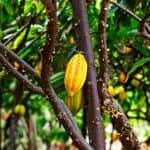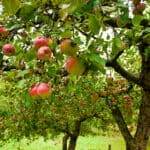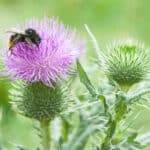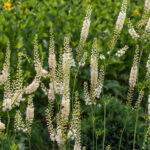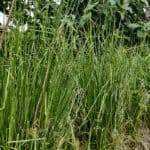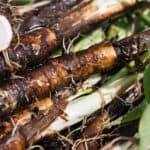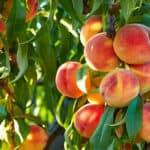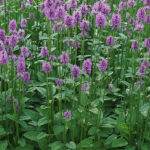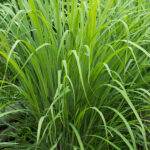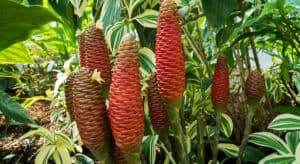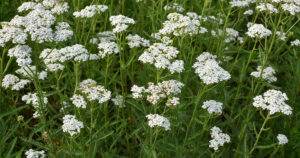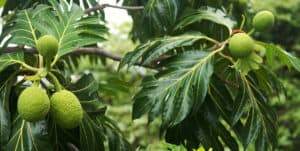Asparagus: A Delightful Delicacy in Your Own Backyard
Growing up, asparagus was a rare and special treat in our household. It was one of my mom’s favorite vegetables and always a coveted ingredient in our meals. We were only able to enjoy it on special occasions because, as many know, asparagus can be pricey at the grocery store.
Little did I know that years later, as I delved into the world of edible gardening, I would discover just how simple and cheap it is to grow asparagus.
And with its perennial nature, asparagus plants continue to provide bountiful harvests year after year! Gardening with asparagus has not only brought me closer with my garden but also to my family, especially my mom.
We now savor each juicy, tender spear we harvest, reminiscing about the days when it was a rare delicacy. The joys of growing asparagus are many, and I am grateful to be able to share this experience with those I love. And with a few tips, you can too!
Asparagus History & Overview

Asparagus is a perennial plant that belongs to the Asparagaceae family, along with plants such as agave, hosta, and yucca. It is a hardy plant that can grow up to six feet tall and is characterized by its long, narrow, edible stems that are topped with feathery, delicate foliage.
Asparagus has a unique flavor that is both earthy and sweet, making it a popular addition to many dishes.
Historically speaking, asparagus is considered ancient as it has been cultivated for centuries. Although its exact origin is uncertain, it has been dated back to 3000 B.C. and is believed to have originated somewhere in the Mediterranean region, spanning across North Africa, Europe, and the Middle East.
Ancient Egyptians valued asparagus and used it as offerings to the gods, it also has been found as art in an Egyptian tomb. Greeks and Romans both prized asparagus for its flavor, with the Greeks harvesting it from the wild, and the Romans gardening with it to maximize production.
During the 1600s, King Louis VIX of France had asparagus grown in greenhouses, ensuring a year-round supply at his fingertips.
Asparagus was introduced to the US in the 1600s when French and English colonists brought it to New England. Later, in the 1850s, asparagus was introduced to California and since then has become the leading producer of the vegetable in the US. Today, asparagus is enjoyed all over the world and is a staple in many kitchens.
In traditional medicine, asparagus has been used as a diuretic, tonic, and to improve digestion. It is also low in calories and is a good source of antioxidants, fiber, and is rich in vitamins and minerals including vitamin A, vitamin C, vitamin E, and potassium.
Asparagus is slightly controversial in my household due to what happens after you eat it. If you’ve ever had asparagus you know (or maybe you don’t but now you will): asparagus makes your pee stink!
Asparagus contains sulfur-containing compounds, including asparagusic acid and odoriferous compounds like mercaptan, that are responsible for the characteristic odor associated with asparagus consumption.
These compounds are excreted through urine and can lead to a strong, pungent odor. It’s worth noting that not everyone experiences this odor after eating asparagus, as the ability to smell it is thought to be genetically determined.
In addition to its culinary and medicinal benefits, asparagus is an easy-to-grow plant with many ecological functions. It requires well-drained soil, plenty of sunlight, seasonal fertilization and consistent moisture to thrive.
The deep root systems of asparagus plants help to improve soil structure and stability, preventing erosion and promoting healthy soil biology. The plant also provides a habitat for beneficial insects, such as bees and ladybugs, which help to maintain a balanced ecosystem.
Asparagus is a highly efficient producer of oxygen, making it a valuable contributor to the overall health of our planet’s atmosphere. When planted in the right conditions, asparagus will provide an abundant harvest for anywhere from 7 to 30 years!
Propagation & Planting
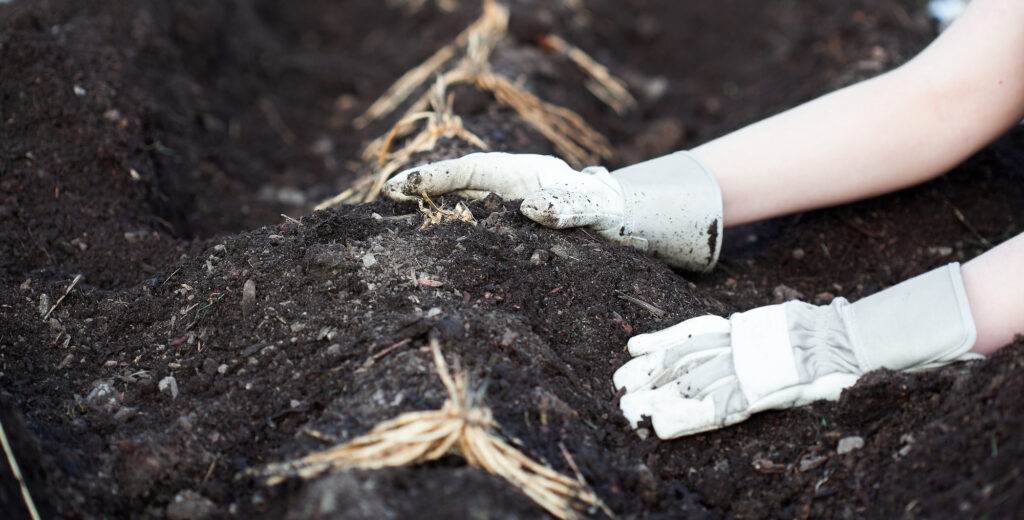
A key principle we learn in permaculture is that when we fertilize, we are not actually feeding the plants, we are feeding the soil.
This absolutely applies to asparagus: if you’re able, prepare your soil prior to getting your starts by incorporating plenty of organic matter and let it sit for several months.
This will not only improve soil structure and fertility, it will give your asparagus plants a head start in the growing season. Be sure to choose a site that is protected from strong winds and receives full sun. In general, asparagus prefers well-drained soil with a pH between 6.5 and 7.5.
Pictured above: A person in gloves planting asparagus crowns on a mound within a trench, their arms visible in the image.
Propagating asparagus is a bit different than propagating many other kinds of plants because it is typically propagated through crowns, which are established roots and shoots. Crowns can be purchased from reputable nurseries or sourced from other gardeners who have mature asparagus plants.
When purchasing crowns, be sure to choose organically grown, healthy, disease-free plants that are free from pests and other contaminants.
When planting asparagus, dig a trench that is 6-8 inches deep and 12-18 inches wide. Space the crowns 18-24 inches apart in the trench, with the roots spread out in a fan shape. Cover the crowns with 2-3 inches of soil, then add another 2-3 inches of soil every 2-3 weeks, until the trench is filled.
This gradual filling of the trench helps to prevent damage to the developing shoots. Once planted, asparagus plants will need plenty of water to get established. It is important to keep the soil evenly moist, but not waterlogged, for the first year after planting.
On planting in rows vs. groups: planting asparagus can be a personal choice based on the orientation of your site. Some gardeners prefer to plant them in rows, while others, like in my garden, choose to intersperse them among other companion plants such as horseradish and artichokes.
This approach is ideal for those who have a perennial polyculture garden, where different plants are grown together for their mutual benefits. Plant in rows if you’re going for efficiency, i.e. larger scale production and ease of harvesting.
Growth & Care
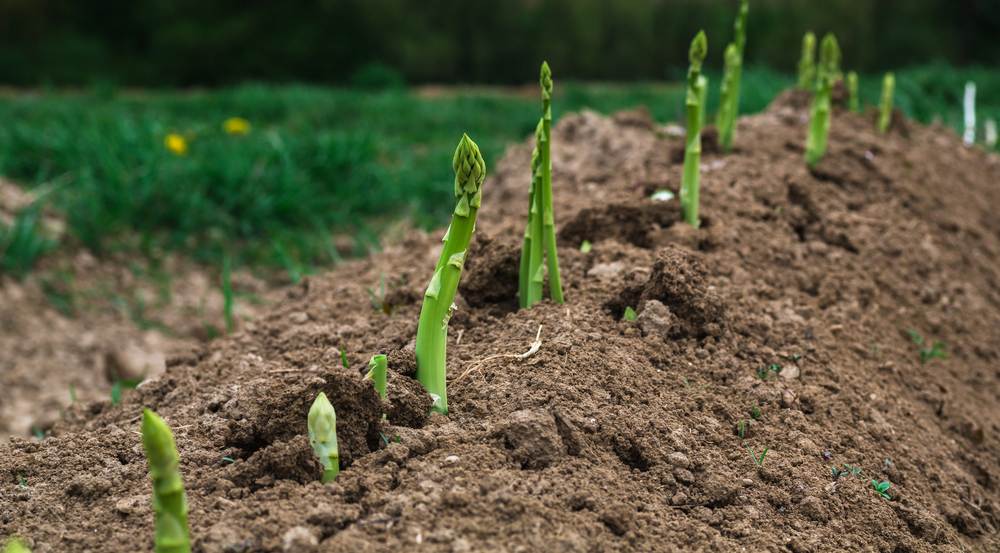
Asparagus is a fascinating plant to grow, not to mention easy and relatively inexpensive. With proper care, it can provide you with an abundance of fresh and delicious spears for many years.
One of the most important things to keep in mind when growing asparagus is sunlight.
Asparagus plants thrive in full sun, and it is important to make sure they receive at least 6 hours of direct sunlight each day.
Temperatures above 85°F (29°C) can lead to scorching and reduced growth, so depending on your climate, choose a location that will not be receiving heat reflections (such as the south side of a house in the Northern Hemisphere).
Because of the size of their initial shoots, it is tempting to plant them as a groundcover in a food forest or polyculture system. But steer clear of this, as they can grow to be up to 7 feet tall!
Water is another aspect of asparagus care. Asparagus plants need a consistent supply of water, especially during their first year of growth. It is important to keep the soil moist, but not waterlogged, in order to prevent root rot.
A mulch layer can help to retain moisture and regulate soil temperature. Overtime, asparagus will become drought tolerant and will need minimal watering.
In terms of fertilization, asparagus is considered to be a heavy-feeder like tomatoes, peppers, corn and cabbage. Fertilize asparagus twice per year to maintain its strength and productivity: first in early spring, just before new spears emerge, and at the end of the harvest season.
To fertilize, spread a thick layer of compost or other broken down organic matter over the bed, working it into the soil around the individual plants or crowns to a depth of 2-4 inches. If mulch is present, pull it back to reach the soil, but take care not to damage the root crowns.
When it comes to fall clean up in your asparagus garden, it is important to consider the role that the dead foliage can play in protecting the crowns of the plants during their dormant period.
While you may be tempted to cut back the foliage all the way to the ground, leaving the dead debris in place can have a beneficial effect.
The dead foliage can help to catch and hold snow, which acts as a natural insulator against freezing temperatures.
Additionally, maintaining a thick layer of mulch over the top of the plants can provide additional protection for the root crowns during this time.
While these steps are important for ensuring the health of your asparagus plants, they are not necessarily urgent and can be taken at a pace that works for you and your garden.
Harvesting
Believe it or not, it takes three years for asparagus to reach full maturity and get to a point where you can consistently harvest the shoots. During the first year, the asparagus plants are establishing a strong root system, which is essential for healthy growth and production in the future.
In the second year, the plants begin to put on top growth and produce some shoots, but the harvest is limited to encourage the plants to continue developing (you can still harvest, but harvest sparingly).
By the third year, the asparagus plants are mature enough to produce a full harvest, which typically lasts 4-6 weeks. This practice of waiting three years to start harvesting allows the asparagus plants to reach full maturity and set the stage for many years of productive growth and harvest.
Once your plants are old enough, the key to a good harvest is knowing the right time to harvest for the best flavor and tenderness. The harvesting season for asparagus typically starts in the spring, when the spears are about 6 to 8 inches tall and have a diameter of about the size of a pencil.
Only take the larger spears, as smaller spears are usually more delicate and may not be as flavorful. You can also peel the spears to remove any tough outer layers, which will reveal the tender flesh that is oh-so delicious.
Refrain from harvesting after a hard rain, as the spears will be more prone to breakage when the soil is wet. To harvest, gently snap the spears off at the soil line using your hands or cut with a clean knife.
In terms of how often to harvest, harvest consistently during the season to ensure that the plants continue to produce new spears. Early on in the season, harvest twice per week, and once spring gets in full swing, you’ll be able to harvest once to two times per day!
Processing & Utilizing
Asparagus is incredibly versatile and can be enjoyed in a variety of different forms. One of the great things about this plant is that it can be enjoyed fresh, canned, frozen, or dried, making it a great option for those who want to enjoy it all year round.
When it comes to processing and utilizing asparagus, there are a few things to keep in mind. Fresh asparagus should be used as soon as possible after harvest, as it will quickly lose its flavor and crispness if stored for too long.
To store fresh asparagus, wrap the ends in a damp paper towel and place it in the refrigerator in a bag or in a cup of water.
If you are looking to preserve asparagus for later use, there are a few different options to consider. One option is to blanch the asparagus and then freeze it, which will help to preserve its flavor and texture.
Another option is to can the asparagus, which can be done in a water-bath canner or a pressure canner. As a tip, canned asparagus usually turns out briney, so pair with fatty and salty dishes.
When it comes to cooking asparagus, there are a wide variety of options to choose from. Asparagus can be grilled, roasted, steamed, or sauteed, and is often served as a side dish or used as a key ingredient in soups, salads, and stir-fry dishes.
One of the best things about asparagus is its versatility when it comes to cooking. For example, you can add it to a simple pasta dish, toss it in olive oil and salt and roast it in the oven, or chop it up and add it to a breakfast skillet. The options are truly endless and you really can’t go wrong!
Bringing Asparagus to Your Garden & Table
Bringing asparagus to your garden is a rewarding experience that you’ll cherish for up to multiple decades. This delicious vegetable has a rich history, and with its relatively easy-to-grow nature, it’s no wonder that it’s been enjoyed by gardeners and food lovers alike for centuries.
With the right care and attention, your asparagus plants will thrive, producing healthy, tasty stalks for you and your loved ones to enjoy.
Whether you’re growing it for its unique flavor, its health benefits, or simply for the satisfaction of growing your own food, there’s no denying that asparagus is a truly wonderful and valuable addition to the garden and table.





